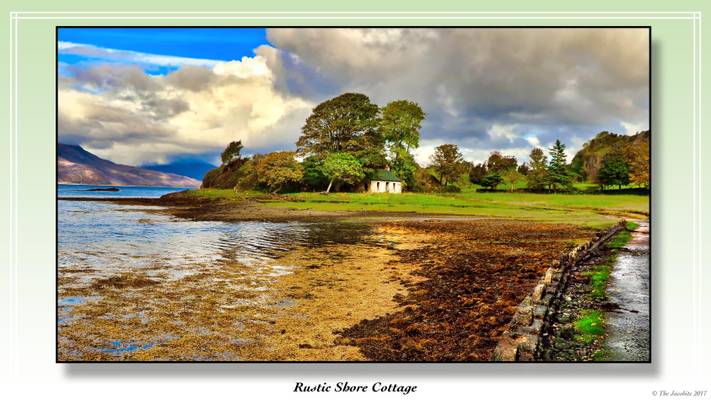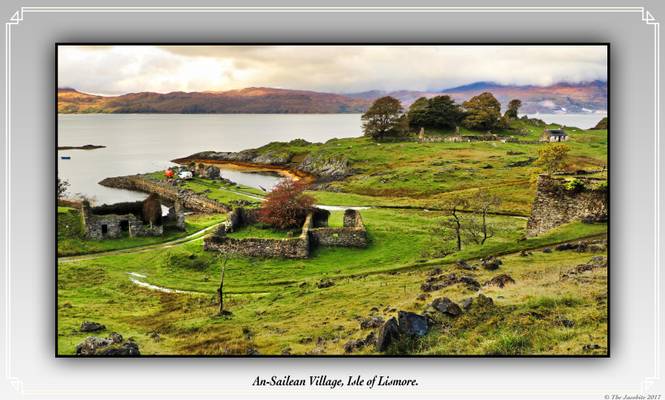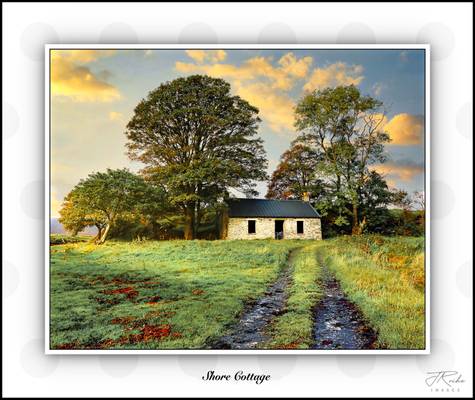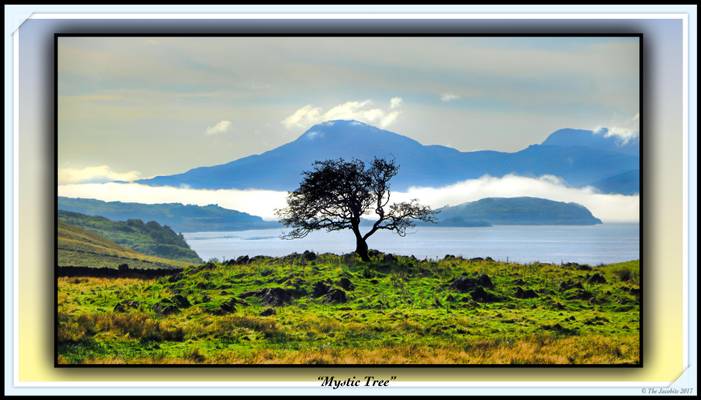
Achnacroish

by The Jacobite
This small cottage (being renovated when I visited it) sits on the shore of the Lynn of Morvern at "An-Sailean Bay" on the west side of the "Isle of Lismore" It was probably home to one of the workers at the nearby Limestone Quarry where it was produced in large quantities for agriculture and cement during the Mid/Late 19th Centuary.

by The Jacobite
Lismore is a rare outcrop of limestone in the geology of the West Coast of Scotland, in the early 19th century the stone was quarried for profit, being burned in limekilns and shipped out in locally owned smacks for agricultural lime and building mortar. The remnants of limekilns and associated works are scattered around the Island, varying in size from a single kiln to the industrial centre here at Sailean. Lime was being worked in this part of the island by 1826, and continued into the 1930s. most of the buildings at Sailean are 19th century. The buildings at Sailean served a sizeable operation and workforce, and included a Manager’s Office, Worker’s Cottages and a shop next to a Cottage on the pier. Some of the houses were inhabited in living memory. In the far top right of the photo can be seen in the distance “Glensanda Quarry” Europe’s largest quarry and ships out some 7 million tonnes of Granite each year.

by The Jacobite
Shore Cottage at Sailen Village on the Isle of Lismore Scotland, now lies abandoned but in years gone by this would have been part of a thriving community, with it’s own Shop, Harbour and Lime Kiln works where up until the late 1930s it was in full production. Scattered around the village are plenty of abandoned and ruined buildings of a past industrial era.

by The Jacobite
Standing on a rocky outcrop and commanding panoramic views over Lismore and the Firth of Lorn, Tirefour Broch is an impressive and well-preserved Iron Age broch. The wall rises to over 10 foot for most of its length, and in one place survives to a height of 16 foot. This iron-age broch dates back 2000 years; once the walls would have been 15 metres high as well as 3 metres thick. The spectacular setting adds greatly to its appeal. The rising mist on the hill to the right is "Port Appin:

by The Jacobite
This lone “Mystic Tree” on the "Isle of Lismore" looks down the waters of the “Lynn of Morvern” the southern continuation of Loch Linnie from "Fort William" to where it meets the “Sound of Mull” with the misty Mountains of Mull beyond. The isle of Mull’s claim to fame is having “Ben More” the highest mountain and only Munro (mountains over 3000ft) on it, reaching a height of 3169ft. It is the highest peak in the Inner Hebrides apart from those on the Isle of Skye.
Thanks to all Phoide contributors to Achnacroish!
Most notably The Jacobite.